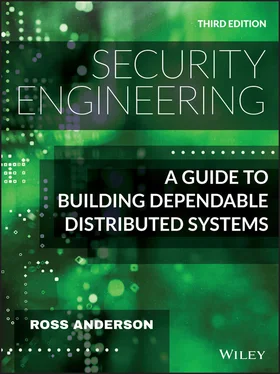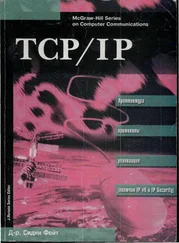Intimate abuse is hard for designers and others to deal with as it's entangled with normal human caregiving between partners, between friends and colleagues, between parents and young children, and later between children and elderly parents. Many relationships are largely beneficent but with some abusive aspects, and participants often don't agree on which aspects. The best analysis I know, by Karen Levy and Bruce Schneier, discusses the combination of multiple motivations, copresence which leads to technical vulnerabilities, and power dynamics leading to relational vulnerabilities [1156]. Technology facilitates multiple privacy invasions in relationships, ranging from casual annoyance to serious crime; designers need to be aware that households are not units, devices are not personal, and the purchaser of a device is not the only user. I expect that concerns about intimate abuse will expand in the next few years to concerns about victims of abuse by friends, teachers and parents, and will be made ever more complex by new forms of home and school automation.
The systems you build or operate can be attacked by a wide range of opponents. It's important to work out who might attack you and how, and it's also important to be able to figure out how you were attacked and by whom. Your systems can also be used to attack others, and if you don't think about this in advance you may find yourself in serious legal or political trouble.
In this chapter I've grouped adversaries under four general themes: spies, crooks, hackers and bullies. Not all threat actors are bad: many hackers report bugs responsibly and many whistleblowers are public-spirited. (‘Our’ spies are of course considered good while ‘theirs’ are bad; moral valence depends on the public and private interests in play.) Intelligence and law enforcement agencies may use a mix of traffic data analysis and content sampling when hunting, and targeted collection for gathering; collection methods range from legal coercion via malware to deception. Both spies and crooks use malware to establish botnets as infrastructure. Crooks typically use opportunistic collection for mass attacks, while for targeted work, spear-phishing is the weapon of choice; the agencies may have fancier tools but use the same basic methods. There are also cybercrime ecosystems attached to specific business sectors; crime will evolve where it can scale. As for the swamp, the weapon of choice is the angry mob, wielded nowadays by states, activist groups and even individual orators. There are many ways in which abuse can scale, and when designing a system you need to work out how crimes against it, or abuse using it, might scale. It's not enough to think about usability; you need to think about abusability too.
Personal abuse matters too. Every police officer knows that the person who assaults you or murders you isn't usually a stranger, but someone you know – maybe another boy in your school class, or your stepfather. This has been ignored by the security research community, perhaps because we're mostly clever white or Asian boys from stable families in good neighbourhoods.
If you're defending a company of any size, you'll see enough machines on your network getting infected, and you need to know whether they're just zombies on a botnet or part of a targeted attack. So it's not enough to rely on patching and antivirus. You need to watch your network and keep good enough logs that when an infected machine is spotted you can tell whether it's a kid building a botnet or a targeted attacker who responds to loss of a viewpoint with a scramble to develop another one. You need to make plans to respond to incidents, so you know who to call for forensics – and so your CEO isn't left gasping like a landed fish in front of the TV cameras. You need to think systematically about your essential controls: backup to recover from ransomware, payment procedures to block business email compromise, and so on. If you're advising a large company they should have much of this already, and if it's a small company you need to help them figure out how to do enough of it.
The rest of this book will fill in the details.
Until recently, research on cybercrime wasn't really scientific. Someone would get some data – often under NDA from an anti-virus company – work out some statistics, write up their thesis, and then go get a job. The data were never available to anyone else who wanted to check their results or try a new type of analysis. Since 2015 we've been trying to fix that by setting up the Cambridge Cybercrime Centre, where we collect masses of data on spam, phish, botnets and malware as a shared resource for researchers. We're delighted for other academics to use it. If you want to do research on cybercrime, call us.
We also need something similar for espionage and cyber warfare. People trying to implant malware into control systems and other operational technology are quite likely to be either state actors, or cyber-arms vendors who sell to states. The criticisms made by President Eisenhower of the ‘military-industrial complex’ apply here in spades. Yet not one of the legacy think-tanks seems interested in tracking what's going on. As a result, nations are more likely to make strategic miscalculations, which could lead not just to cyber-conflict but the real kinetic variety, too.
As for research into cyber abuse, there is now some research, but the technologists, the psychologists, the criminologists and the political scientists aren't talking to each other enough. There are many issues, from the welfare and rights of children and young people, through the issues facing families separated by prison, to our ability to hold fair and free elections. We need to engage more technologists with public-policy issues and educate more policy people about the realities of technology. We also need to get more women involved, and people from poor and marginalised communities in both developed and less developed countries, so we have a less narrow perspective on what the real problems are.
There's an enormous literature on the topics discussed in this chapter but it's rather fragmented. A starting point for the Snowden revelations might be Glenn Greenwald's book ‘No Place to Hide’ [817]; for an account of Russian strategy and tactics, see the 2018 report to the US Senate's Committee on Foreign Relations [387]; and for a great introduction to the history of propaganda see Tim Wu's ‘The Attention Merchants’ [2052]. For surveys of cybercrime, see our 2012 paper “Measuring the Cost of Cybercrime” [91] and our 2019 follow-up “Measuring the Changing Cost of Cybercrime” [92]. Criminologists such as Bill Chambliss have studied state-organised crime, from piracy and slavery in previous centuries through the more recent smuggling of drugs and weapons by intelligence agencies to torture and assassination; this gives the broader context within which to assess unlawful surveillance. The story of Gamergate is told in Zoë Quinn's ‘Crash Override’ [1570]. Finally, the tale of Marcus Hutchins, the malware expert who stopped Wannacry, is at [812].
1 1 Sigint (Signals Intelligence) Activity Designator
2 2 If the NSA needs to use high-tech collection against you as they can't get a software implant into your computer, that may be a compliment!
3 3 In the 1990s, when I bid to run a research program in coding theory, cryptography and computer security at the Isaac Newton Institute at Cambridge University, a senior official from GCHQ offered the institute a £50,000 donation not to go ahead, saying “There's nothing interesting happening in cryptography, and Her Majesty's Government would like this state of affairs to continue”. He was shown the door and my program went ahead.
Читать дальше











